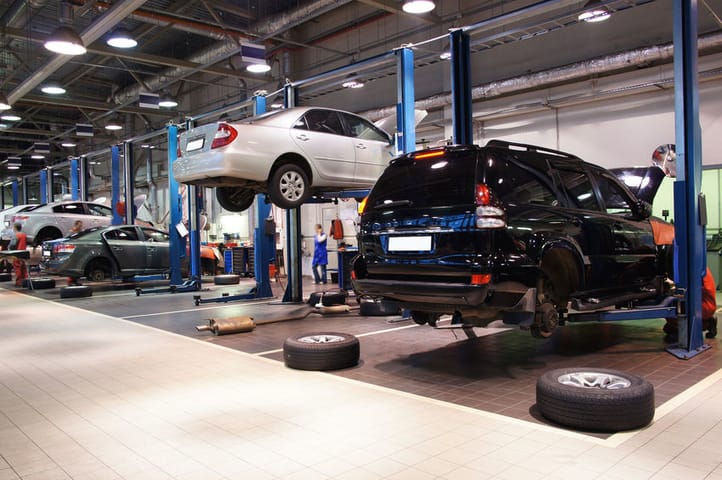All Categories
Featured
Correct tire upkeep is vital to prolonging the life of your automobile and making certain a smooth and safe driving experience. Two of the most vital tire solutions are tire turning and alignment. These solutions not just avoid early tire wear yet also boost handling, fuel effectiveness, and general security. If you're unfamiliar with what tire turning and placement require, right here's a thorough appearance at why they matter and exactly how they benefit your lorry.
What Is Tire Rotation? Tire rotation refers to moving your tires from one placement to another to guarantee they use uniformly. The reason tire turning is needed is since not all tires put on similarly. In front-wheel-drive automobiles, for instance, the front tires deal with both guiding and power, that makes them use out faster than the back tires. The rear tires wear differently in rear-wheel-drive and all-wheel-drive automobiles.
By turning your tires routinely, you can cancel the wear across all four tires. This assists them last longer and enables even more also traction, boosting handling and stability. A lot of makers recommend revolving your tires every 6,000 to 8,000 miles or based on the car's manual.
What Is Tire Positioning? Tire alignment, also understood as wheel positioning, refers to the procedure of readjusting the angles of your cars and truck's wheels to fulfill the producer's requirements. The objective of alignment is to ensure that all four tires are pointing in the appropriate instructions and at the proper angles, which enables optimal handling, safety and security, and tire life.
There are three major positioning angles that are changed throughout a placement check:

Camber: The tilt of the wheels when watched from the front. If the camber is off, it can result in uneven tire wear, as the tire will not make full call with the road surface. Caster: The angle of the steering axis when checked out from the side. Appropriate wheel placement guarantees that your vehicle is stable when driving straight which your wheel returns to its regular setting after a turn. Toe: The angle at which the tires direct inward or outward when seen from above. Wrong toe placement can trigger the tires to drag, bring about uneven wear and lowered gas efficiency. Misalignment can happen with time due to normal driving or from striking obstacles like curbs or craters. If your positioning is off, it is very important to obtain it checked and fixed to stay clear of problems later on.
Why Tire Turning and Positioning Matter. Boosted Tire Life:. Normal tire rotation makes sure also tire wear, aiding you get the most gas mileage out of your tires. Unequal wear can cause you to replace tires prematurely, which can be expensive. When your tires put on evenly, they last much longer, saving you money in the long term.
Improved Car Handling:. Correct alignment maintains your car driving straight and stable, specifically at higher speeds. Misalignment can trigger your car to draw away, making it more difficult to steer. By maintaining your tires aligned, you guarantee your automobile handles a lot more efficiently and naturally.
Boosted Safety And Security:. Tires that are not revolved or aligned appropriately can wear unevenly, influencing how well your vehicle stops and edges. Misaligned tires or tires with uneven wear patterns might create decreased grip, particularly in wet or icy conditions, leading to a higher danger of mishaps.
Better Fuel Performance:. Tires that are misaligned can produce rolling resistance, meaning your engine has to work more difficult to relocate the car. This increases fuel intake and lowers your auto's fuel performance. Appropriate tire placement decreases rolling resistance, which can boost gas mileage.
Signs Your Tires Required Turning or Positioning. While it's essential to remain on top of routine tire turnings and alignments, there are a few indications that might show your tires require attention:
Irregular Put On: If you observe that tire is much more worn than the others, it's likely time for a turning. Guiding Pull: If your automobile pulls to one side or really feels off-center, maybe a sign of imbalance. Vibrations: If you really feel vibrations in the guiding wheel or the automobile, maybe as a result of a placement issue. Noisy Tires: Screeching or loud tires can indicate improper turning or imbalance. If you discover any of these signs, it's crucial to get your tires checked by a specialist.
Just How Frequently Should You Turn and Align Your Tires? Tire rotation should normally be done every 6,000 to 8,000 miles, though this can vary based on your driving problems and the type of car you drive. It's additionally a good idea to have your tires rotated whenever you get an oil modification.
For placement, you ought to have your tires straightened every 1-2 years, or extra often if you discover any kind of problems with managing or unequal tire wear. If you struck a huge pothole or aesthetic, it's a good idea to obtain a positioning examine as soon as possible.
Final Thought: Routine Maintenance for Ideal Efficiency. Tire rotation and alignment are 2 simple yet essential services that keep your auto running efficiently, effectively, and securely. By turning your tires consistently and keeping your wheels correctly lined up, you can expand the life of your tires, enhance handling, and delight in much better gas performance.
Latest Posts
The Importance of Professional Gutter Installation and Upkeep
Enhancing Your Residential Property with Washington Fence
A Raised Culinary Experience